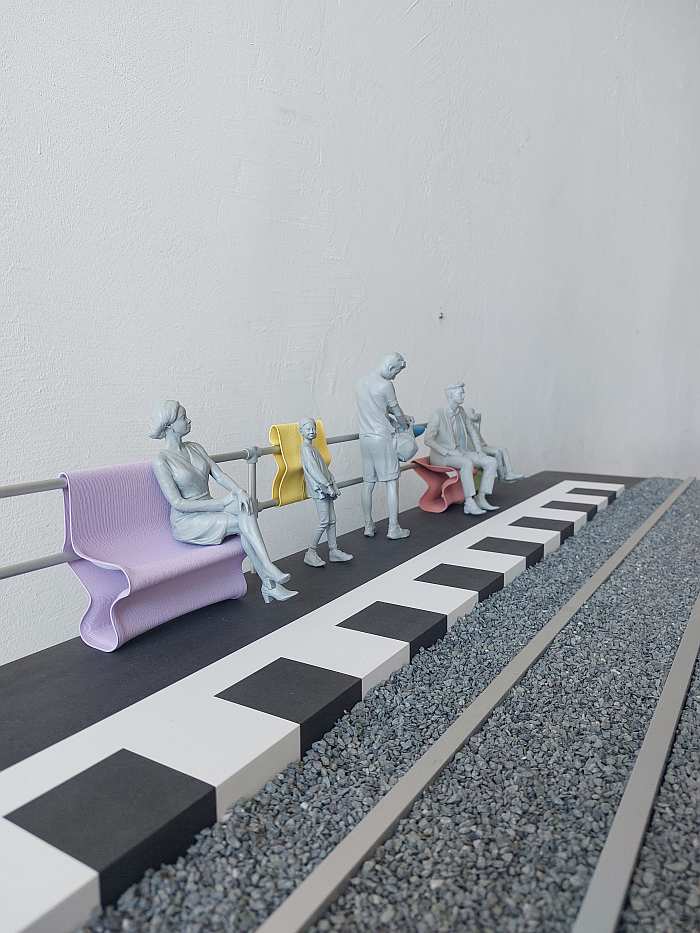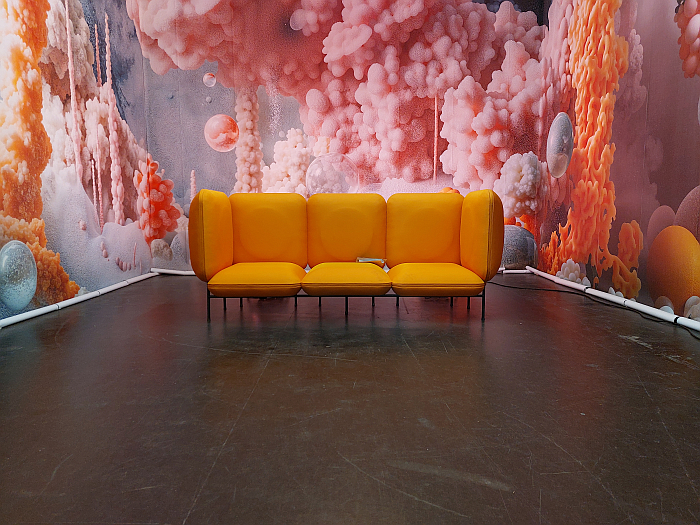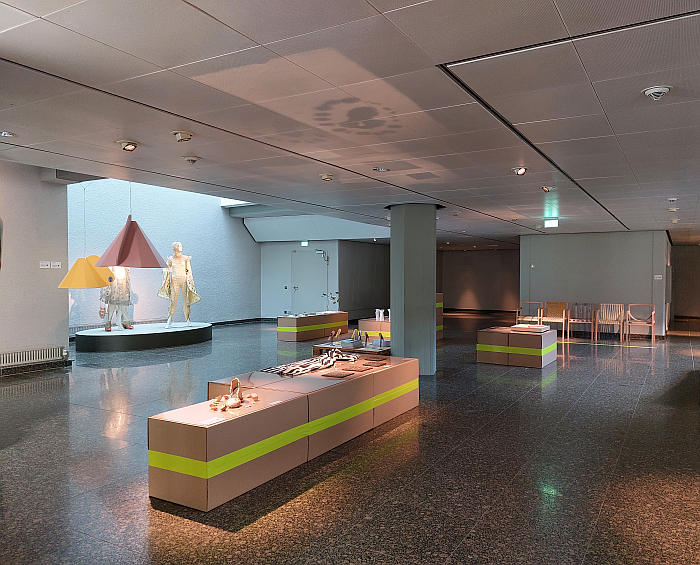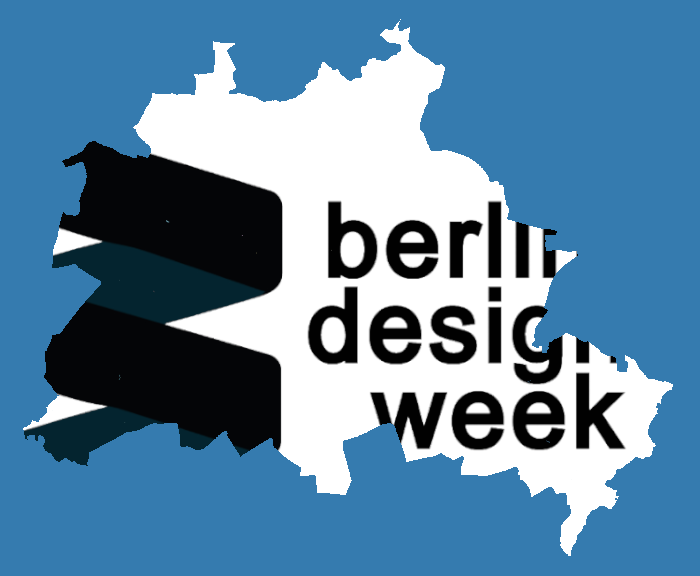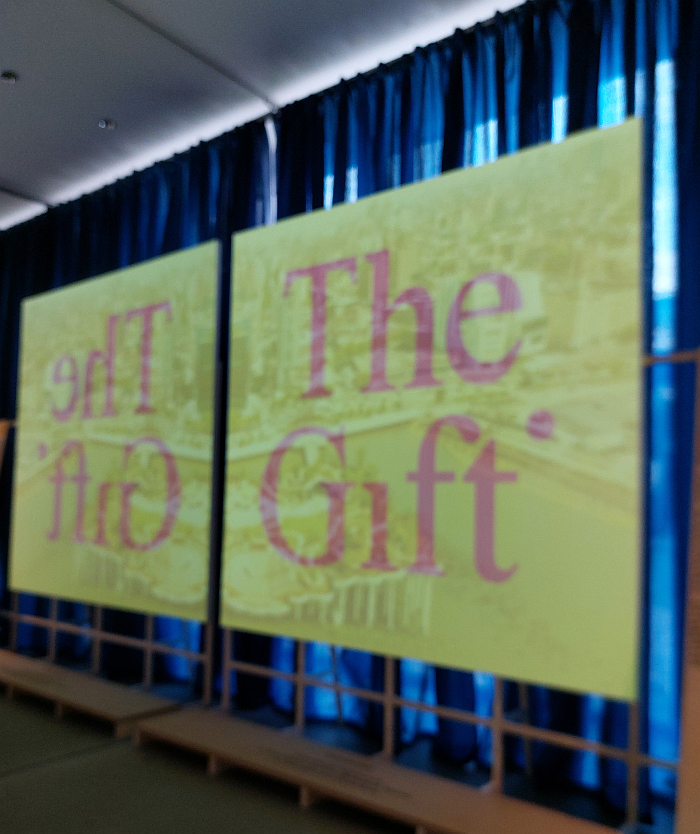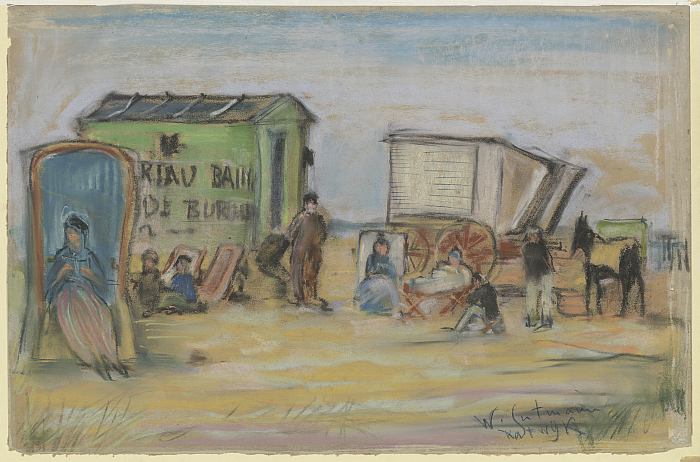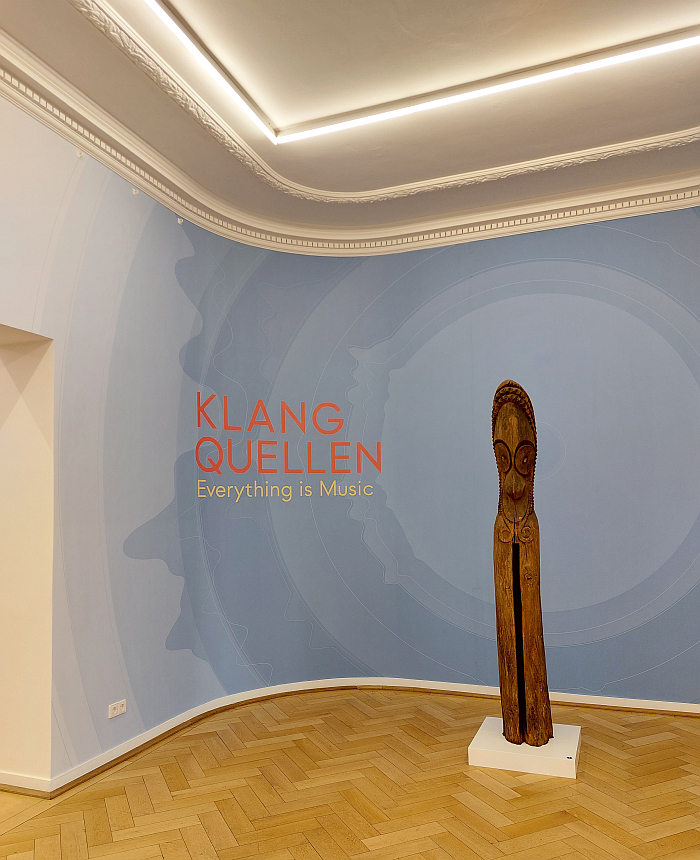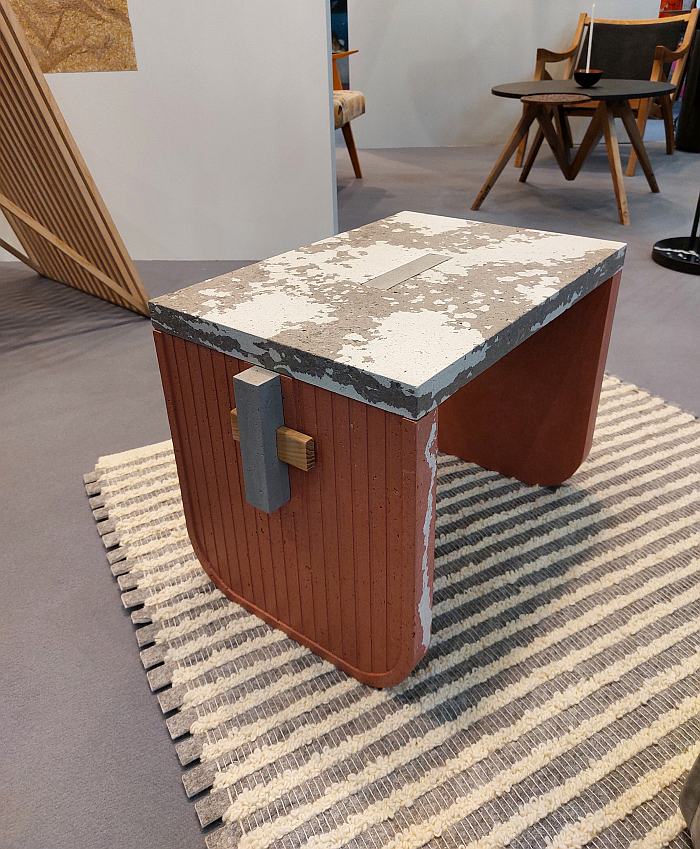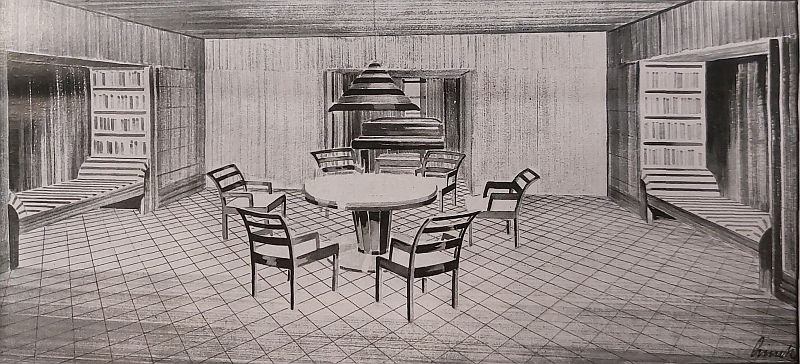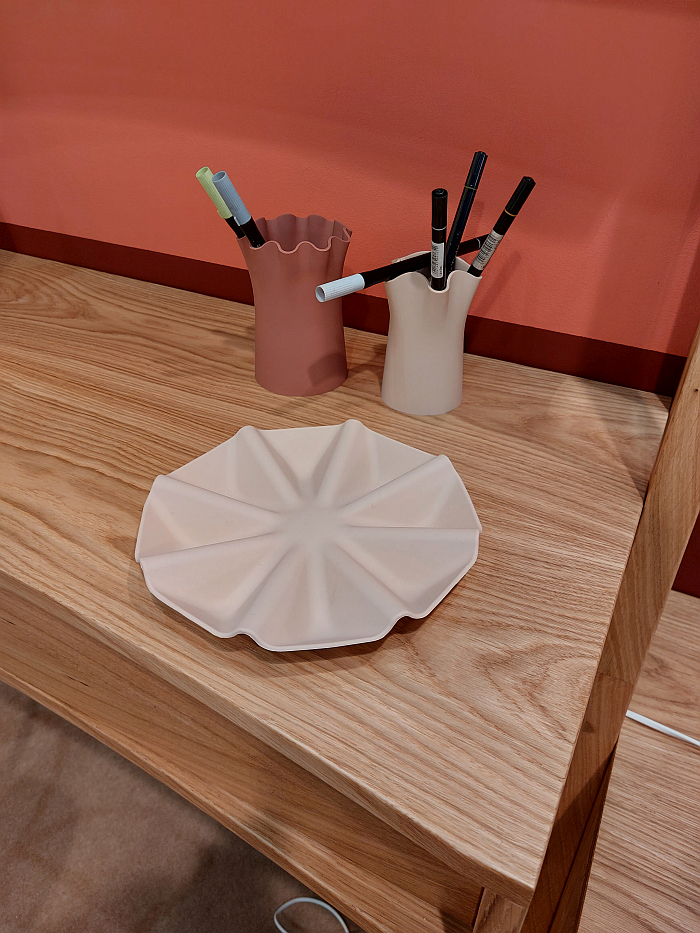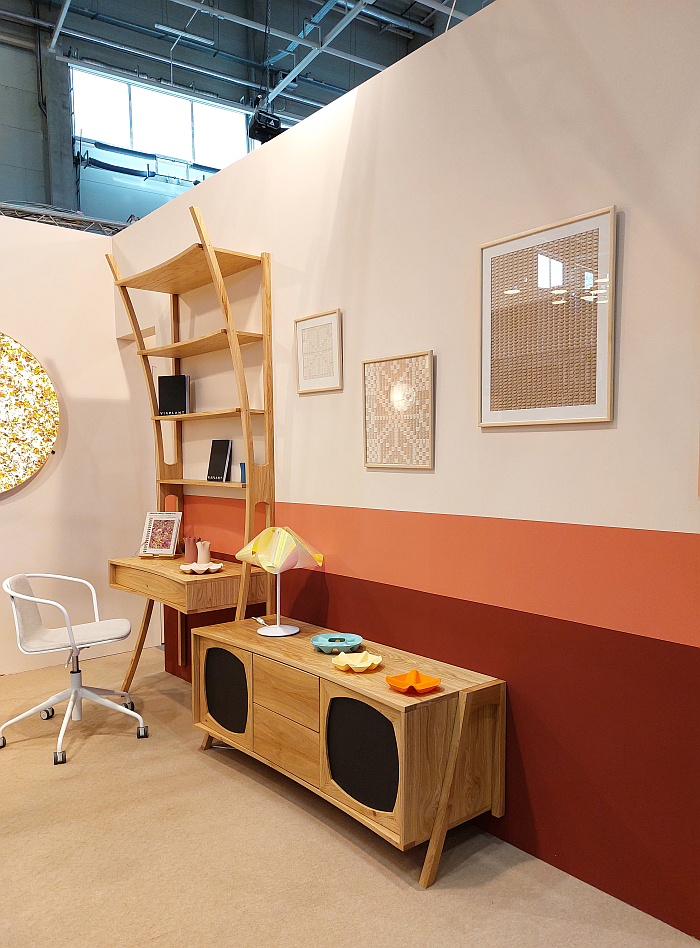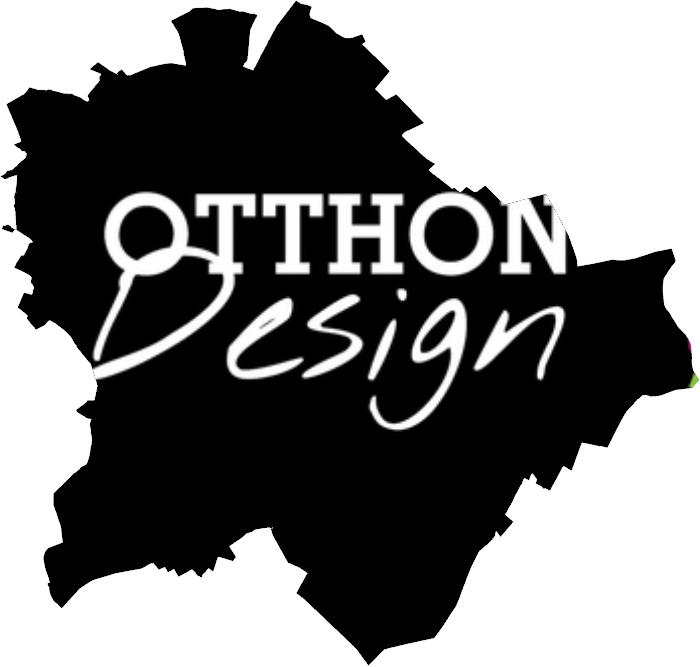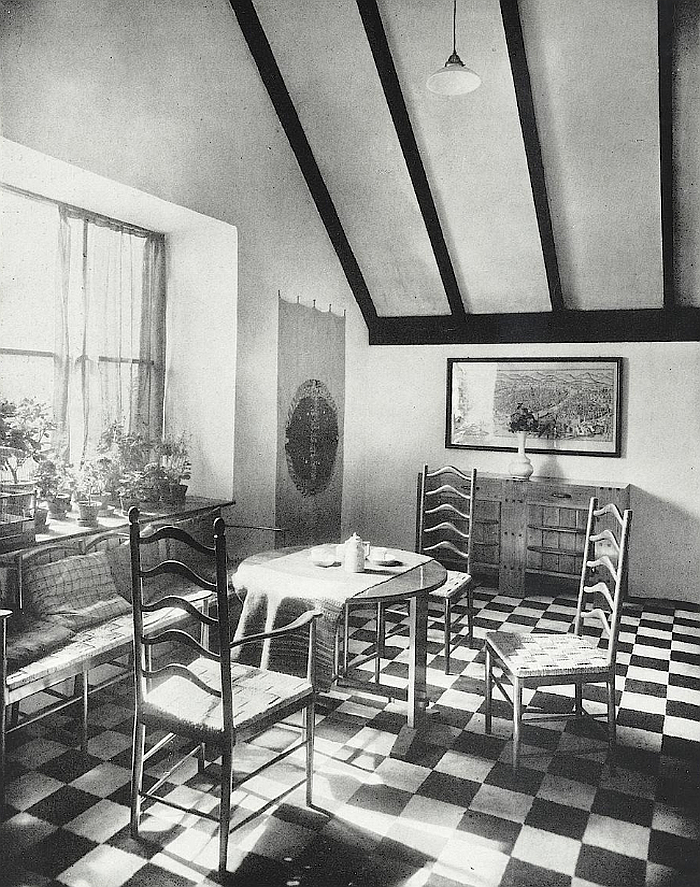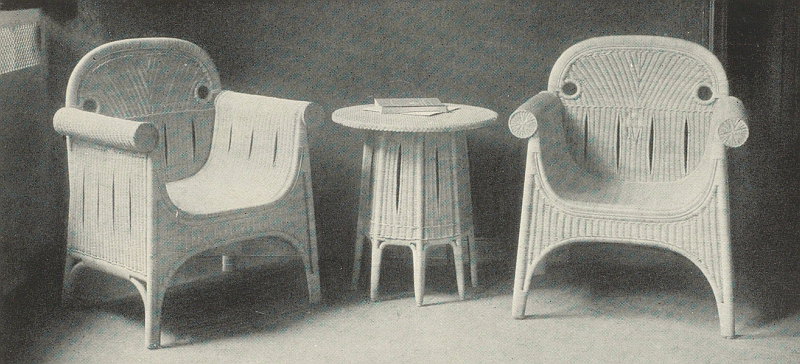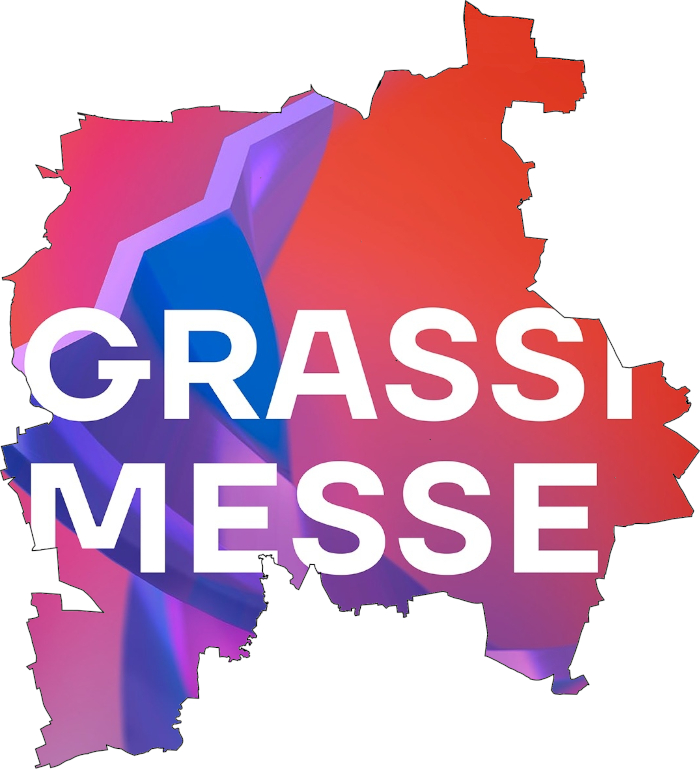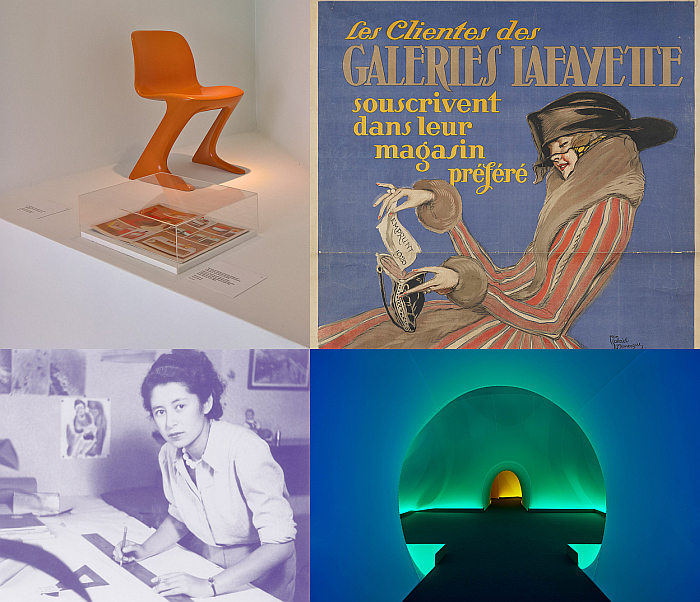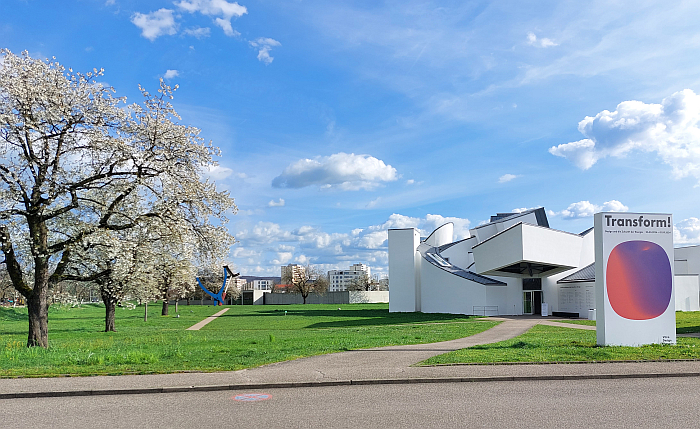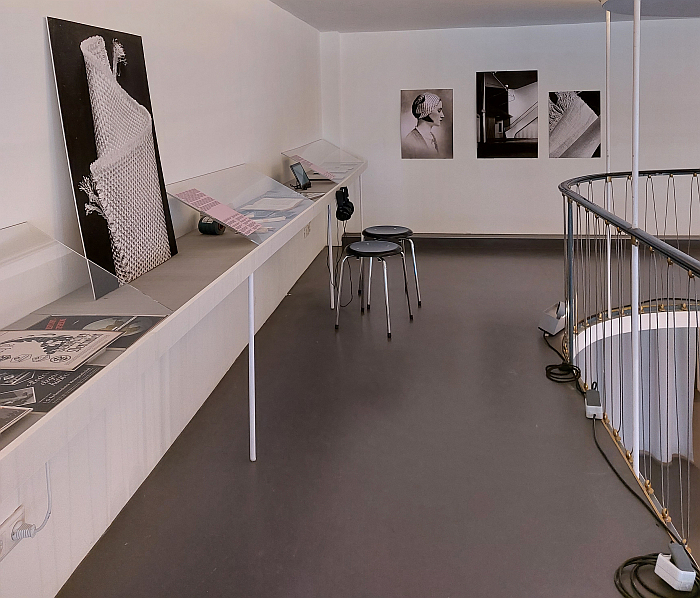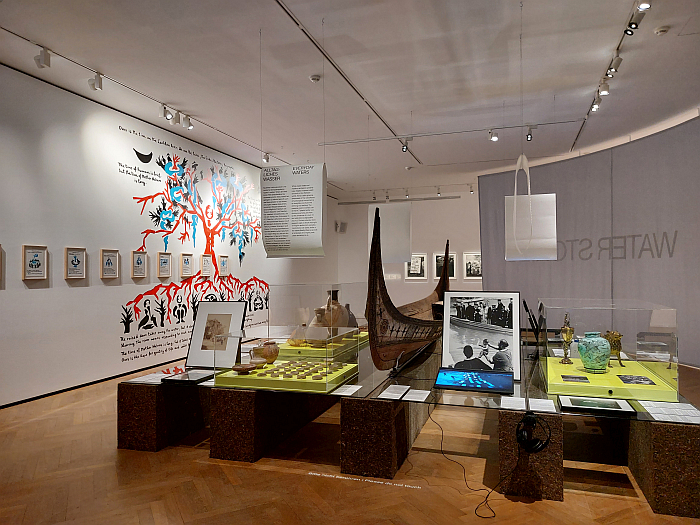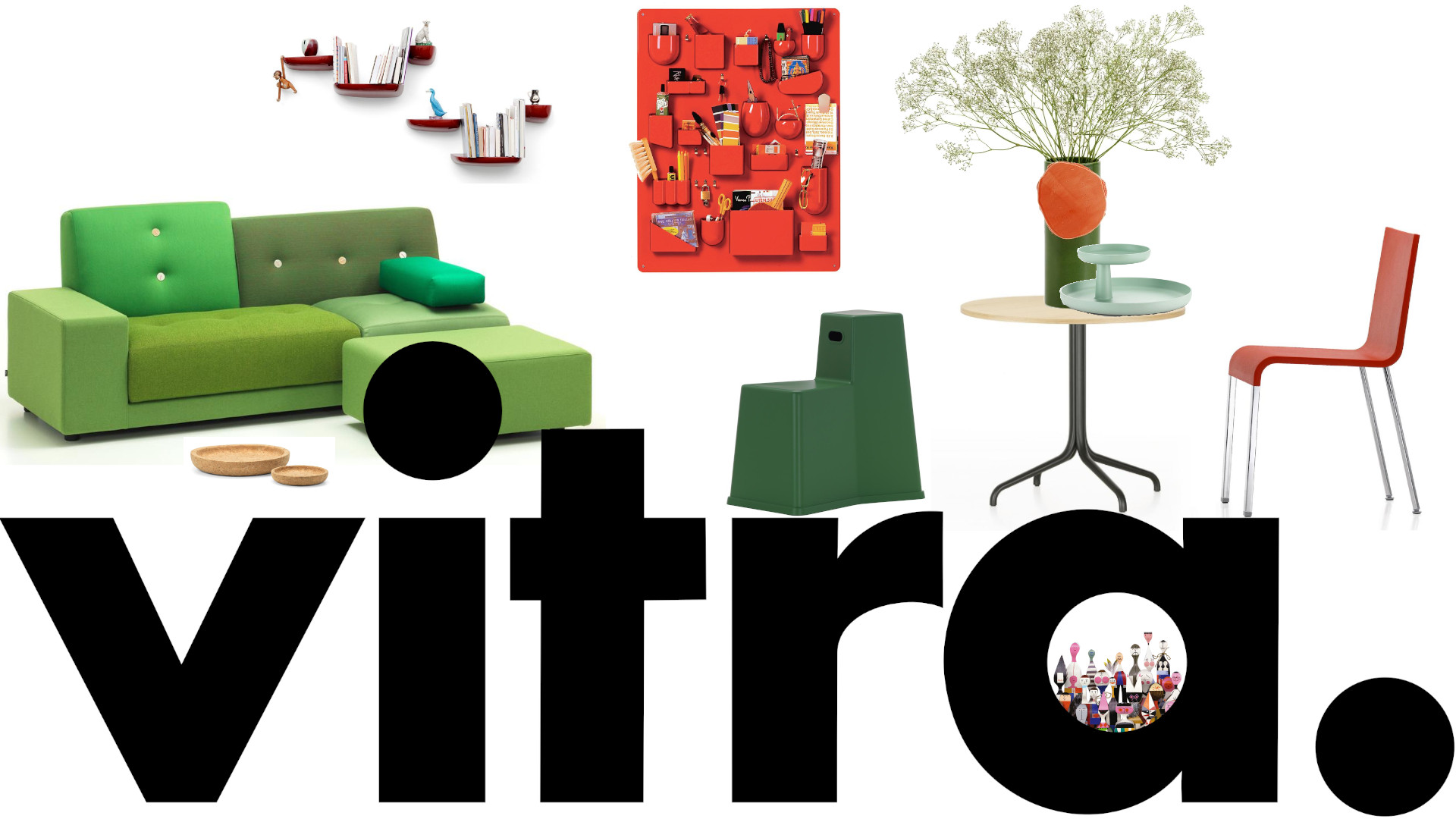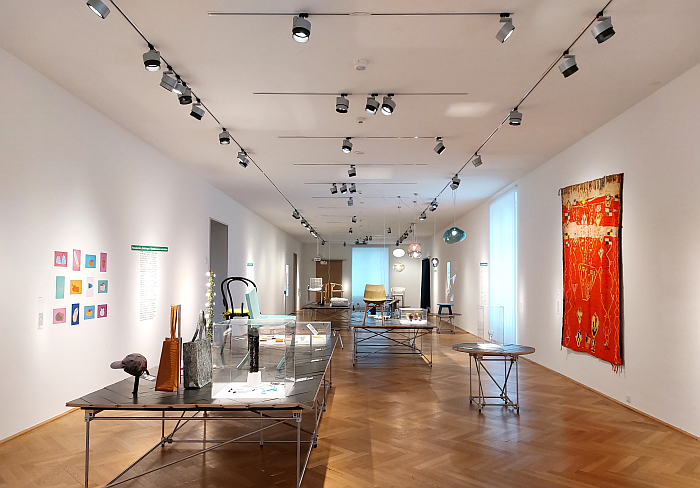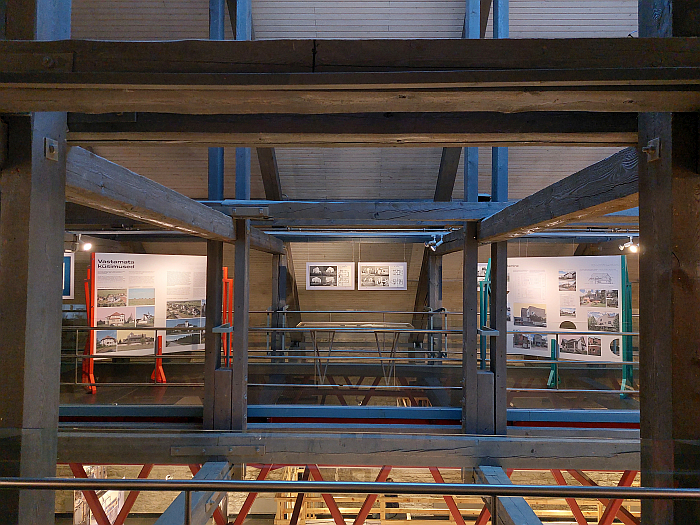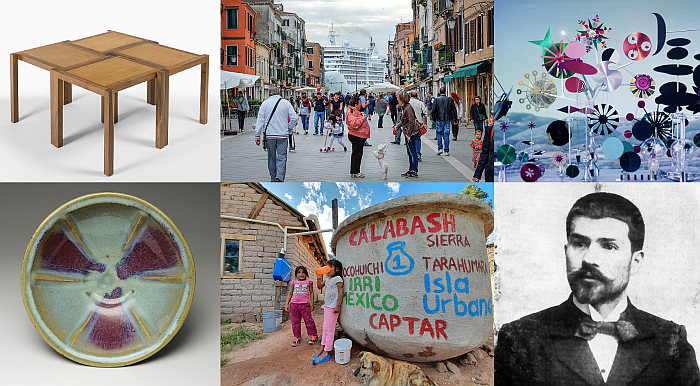Berlin Design Week 2024 Compact: Morari by Jesse Altmann, Valentina Lenk and Klara Schneider
Berlin Design Week 2024, Juten Tach!
Over the years of these dispatches design weeks in Berlin, in a wider sense design and designers in Berlin, have played a very important role, as can be gauged from the tag cloud in the footer: Berlin is one of our most regularly used tags, and DMY Berlin occurs more often than a great many designers, manufacturers, fairs and other festivals.
A DMY Berlin that back in the day we used to essentially live in; like some awkward, artless, commensalistic symbiont we would spend days on end drifting round the event, and indeed round Berlin, feeding, hungrily, from it. And in doing so learned so much, met so many people who greatly assisted us in finding our way forward, met so many projects which we still refer back to when reflecting on that which is before us, as we grapple on daily basis with “design” as a term.
And then DMY Berlin imploded. Quite spectacularly so.
But by which point there was a new event in town: state of DESIGN. A, looking back, we’d argue, breakaway from DMY, a desire on the part of the organisers to do something different, to stage a different sort of design event. And an attempt to link back, in context and acceptance of the new realities in which Berlin and design found themselves, to Designmai, that near mythical Berlin design event, which, at that time, set new standards for design festivals, and from which DMY arose as, looking back, we’d argue, a breakaway, as a desire on the part of the organisers to do something different. There’s that helix again.
And then an awful lot of things imploded. Quite spectacularly so.
Including our relationships with the state of DESIGN organisers. Whereby we can’t remember exactly what happened, are absolutely certain though it was our fault. If we remember correctly things started rumbling in Cologne, it certainly got a bit messy in Cologne. And then even messier in Berlin. Although that said, and thinking a bit further, we may be able to shift some of the blame elsewhere. Or consider it all water under the bridge. Life and that. We’ll certainly always be grateful for the good times. And for all we learned.
And not only did our relationships with the state of DESIGN festival organisers change for the worse, but also within the state of DESIGN festival family relationships were negatively realigned, and after a couple of years as an independent festival state of DESIGN reorganised itself in a much more reduced form, if still with just as much ambition and desire and appetite, and ideas, as a component of a newly conceived Berlin Design Week, an event that united a trio of existing events under a unified banner. And under the guidance and leadership of part of the state of DESIGN festival family.
And while we didn’t actively avoid the new Berlin Design Week, we were at the first edition, or at least part of it, we, as we are, avoided the more commercial parts, of which there were, certainly in our memory, a great many, particularly around Bahnhof Zoo, we did stop prioritising it, did stop clearing time in our calenders for Berlin, as we’d once done. And so stopped attending without ever planning to stop. Space in our calender is very quickly filled.
And then came Covid, and not only were calenders thoroughly irrelevant but Berlin was suddenly a long, long way away. As was Berlin Design Week.
But Berlin Design Week is still there.
Which is good, not least because if there is one city that should, must, have a design week it’s Berlin. And we’re not saying that from a nostalgic viewpoint, nostalgia ain’t our bag, but from a design point of view. The two need each other.
For its 2024 edition Berlin Design Week combines, in a well established, and always pleasing, practice, a central exhibition space, this year in the Peter-Behrens-Bau in Oberschöneweide, with decentral spots around the city, and also with the showcase NEXT. Young European Design in the Kunstgewerbemuseum. But, and pleasingly, doesn’t feature the mass commerce around Bahnhof Zoo.
We’re back at Berlin Design Week 2024, again not nostalgia but genuine curiosity and hankering to see the works and projects and positions on show, and over the next few days we will bring you some of our thoughts and reflections on some of those works and projects and positions experienced, and some of our thoughts and reflections on Berlin Design Week 2024 as an event….. unless that is the organisers see us, in which case we’ll be hiding in a cupboard. JOKE!!! Will of course say hello.
And for all in or near Berlin, Berlin Design Week 2024 runs until Sunday May 5th.
Further information can be found at https://berlindesignweek.com
5 New Architecture & Design Exhibitions for May 2024
As all around, certainly all around here in Europe, the world blossoms and blooms into life, as colour and variety and vitality abound, it’s strange to remember that just a few short weeks ago everything was so barren, monochrome, desolate.
Not least in context of the global architecture and design museum community: how hard we had to labour to achieve anything approaching what could justifiably be termed a ‘list’ of new architecture and design exhibitions.
Similarly it’s hard to imagine that in a few short weeks we will once again be in a position of scrubbing around looking for new exhibitions worthy of mention.
But spring and early summer are months of abundance, months where new exhibitions are waiting to be harvested, months to take advantage of while the going is good. We could have published two lists for May 2024, decided however to stay with the one; would however very much encourage you all to visit, at least, two lists worth. If not more. Get your fill while you can.
Our 6 recommendations for new exhibitions opening in May 2024, our starting points for May 2024, take us all to Berlin, Prague, Jyväskylä, Milan, Brussels and Weimar…….
The Gift. Stories of Generosity and Violence in Architecture at the Architekturmuseum der TU München
Amongst the great many delights of the exchange, the interplay, between German and English is the word ‘Gift’:
| German | English |
| Gift | Poison |
| Geschenk | Gift |
An interplay that, apart from all the other joys it brings, allows one to rephrase Virgil’s “timeō Danaōs et dōna ferentēs” ‘Beware Greeks bearing gifts’ as ‘Beware Germans bearing Gift‘.🤣
With the exhibition The Gift. Stories of Generosity and Violence in Architecture the Architekturmuseum der TU München explore architecture as a Geschenk and architecture as a poison…….
Sound Sources. Everything is Music! at the Weltkulturen Museum, Frankfurt
“Why are the sounds we play in our apartments always music?” asked the Danish architect and designer Verner Panton, “aren’t the sounds of a chicken farm, waves, the wind and many other things just as beautiful?”1
Questions that force one to question the difference between ‘sounds’ and ‘music’, but for all to question our relationships with the myriad ‘noises’ that accompany daily life.
With the exhibition Sound Sources. Everything is Music! the Weltkulturen Museum, Frankfurt, provide a space for approaching such questions…….
Otthon Design Budapest 2024 Compact: Bold Collection by András Kerékgyártó for Brave Home
Grassimesse Leipzig 1920, Morschn!
After several years of preparation, and a lot of, at times (very) heated, discussion, this past March saw the staging of the inaugural Grassimesse Leipzig in the city’s Rathaus.
Instigated by Dr. Richard Graul, Director of the Leipzig Kunstgewerbemuseum by way of a response to, an answer to, the increasing concerns amongst many professional creatives regarding the quality of contemporary objects of daily use presented at the bi-annual Leipzig Fair, for all the quality of the novel machine produced goods of contemporary industry, the Grassimesse intends to be not only a platform for presenting the highest quality of contemporary craft, applied art and design, but also to be a platform for exchange and mediation between creatives and industry and commerce, and thereby seeks to help to stimulate an increase in the quality, usefulness, beauty and value for money of the everyday goods of contemporary life.
An important part of the Grassimesse concept is that only works selected by a jury are admitted. Or more accurately, works selected by juries: potential exhibitors at the inaugural Grassimesse were first required to submit their work to a regional jury who, based on the prevailing requirements, made their recommendations to the principle jury who had the final say on who was to be admitted. A principle jury headed by Dr. Graul and including in its number both creatives such as, and amongst others, Peter Behrens, Walter Gropius, Josef Hoffmann or Bernhard Pankok and also representatives of manufacturers and dealers including, for example, Rosenthal porcelain, Selb, Rabe & Co, Bremen, Bruckmann & Söhne, Heilbronn or the Plauen based textile manufacturer Alfred Schönfeld.1 And thus a jury which tends to underscore not only the support Dr. Graul’s initiative has, but also the Grassimesse’s relevance, arguably importance, in context of the contemporary debates of our post-War 1920s.
In the coming days and weeks we’ll bring you some of our thoughts and reflections on some of those selected exhibitors, and of and from Grassimesse 1920 in general.
And for all crafters, applied artists and designers interested in being part of the Grassimesse, in contributing to its (hi)story, and in helping it develop further from its original aims and intentions, helping it remain a relevant and informative and entertaining platform for discussions and discourse on contemporary craft, applied art and design, applications for the 2024 edition can be submitted until Wednesday May 15th.
Whereby, the jury selection process for 2024 is much, much simpler than it was for 1920. If no less strict and demanding and rigorous. And no less important.
Full details, including details of the six Grassi Prizes up for grabs, a sextet that features the €2,500 smow-Designpreis, can be found at www.grassimesse.de
Good Luck!!!
Radio smow Special: 2000 smow Blog Posts…….
So unwilling are we here at smow Blog to blow our own trumpet, we don’t even own a trumpet. Why would we, we’d never blow it. It would just lie in the corner, unused, wastefully untooted.
However, 2000 smow Blog posts is an occasion very much demanding of a fanfare.
Technically 2001 smow Blog posts, the nature of these things meaning this post didn’t appear as planned between Transform! Designing the Future of Energy at the Vitra Design Museum, Weil am Rhein and 5 New Architecture & Design Exhibitions for April 2024, but hey when did things ever go to plan round our way.
And while we can’t sound a fanfare, wouldn’t sound a fanfare even if we could, we can do that thing we enjoy almost as much as furniture: we can have a bit of a dance.
And, and making a rare exception, it is after all a very special occasion, you’re all invited…….
5 New Architecture & Design Exhibitions for April 2024
As Letitia Elizabeth Landon so very, very, nearly wrote in 1823,
Of all the months that fill the year
Give April’s month to me,
For the architecture and design museums are then so filled,
With sweet variety!
Our sweet variety in April’s month of 2024 can be found in Dessau, Brussels, Rome, Paris and Dresden…….
Transform! Designing the Future of Energy at the Vitra Design Museum, Weil am Rhein
As we all know from the 1st Law of Thermodynamics, energy cannot be created nor destroyed, only transformed from one form to another.
And as a species we’ve developed a myriad ways of transforming one form of energy to another.
We burn oil.
We burn coal.
We burn gas.
We burn wood.
We burn an awful lot, don’t we…..
But we also employ, for example, the kinetic energy of wind, waves and photons or the potential energy of Uranium atoms.
With Transform! Designing the Future of Energy the Vitra Design Museum, Weil am Rhein, focus less on the physical and chemical transformations of energy, as on transformations in how we source, supply and use energy…….
Otti Berger. Weaving for Modernist Architecture at the Temporary Bauhaus-Archiv, Berlin
“To meet the needs of a living architecture,” opined Otti Berger in 1930, “we need clarity about what fabric is, and further, what fabric in space is”.1
With the showcase Otti Berger. Weaving for Modernist Architecture the Temporary Bauhaus-Archiv, Berlin, allow one to begin to approach appreciations of what both Otti Berger understood as fabric, “and further, what fabric in space is”, and in doing so not only enable differentiated perspectives on Weaving and Modernist Architecture but allow Otti Berger to begin to retake her place on the helix of design, and architecture, (hi)story……
Water Pressure. Designing for the Future at the Museum für Kunst und Gewerbe, Hamburg
It would inarguably, and inexcusably, be little more than employing a lazy, cheap, unwarrantable, stereotype and innuendo to opine that Hamburg is an apposite location for an exhibition exploring and discussing human societies’ relationships with water, being as it is a city where the incessant, clinging drizzle is only interrupted by the regular torrential downpours; rather, Hamburg is an apposite location for an exhibition exploring and discussing human societies’ relationships with water, as it is a city where the incessant, clinging drizzle is only interrupted by the regular torrential downpours. And because not only the fortunes and stature of the city were built on water, for all in the distant days of the fabled Hanseatic League, and of the pirates who cooperated with the city’s Hanseatic era leaders in their desires to assert Hamburg’s primacy on the Elbe1, but also Hamburg is physically built on, and for all physically built in, water. Which means that not only the streets and canals and banks – river and financial – of Hamburg offer access to perspectives on and of our relationships with water past and present, but that our relationships with water future will, invariably, be expressed through, and embodied by, Hamburg’s future. Or lack thereof.
With Water Pressure. Designing for the Future the Museum für Kunst und Gewerbe, Hamburg, not only create space for that exploration of and discussion on human societies’ relationships with water, but also for reflections on the roles, functions and responsibilities of design, and designers, in context of forming and defining our relationships with water past, present and future…….
Perfectly Imperfect – Flaws, Blemishes and Defects at the Gewerbemuseum, Winterthur
There is a convincing argument to be made that in our contemporary age perfection is one of our primary aims, one of our guiding aims, individually and collectively. A convincing argument to be made that perfection is, to paraphrase a Shane MacGowan, ‘the measure of our dreams’. And there are no shortage of experts out there to tell us all how to achieve that perfection, in all areas of life and work and love and home and hobby.
With Perfectly Imperfect – Flaws, Blemishes and Defects the Gewerbemuseum Winterthur question perfection, and society’s fascination with perfection…….
Bold and Beautiful. Estonian private houses from the 1980s at the Eesti Arhitektuurimuuseum, Tallinn
In the popular narrative of architecture and design in the second half of the 20th century the phrase ‘Postmodern’ is widely used; a wide use, and an equally wide, unquestioning, popular acceptance of what is meant, that all too often not only blinds us all to the heterogeneity of the period but also impedes meaningful debate and discussion on the motivations, positions and realities of that period. And on the lessons of the period.
With Bold and Beautiful. Estonian private houses from the 1980s the Eesti Arhitektuurimuuseum, Tallinn, remind of the need for more nuanced, and wider-ranging, reflections and discussions…….
5 New Architecture & Design Exhibitions for March 2024
In Shakespeare’s A Winter’s Tale Perdita bewails that she has no “flowers o’ th’ spring” to make garlands for, and to strew over, her beloved Florizel; “flowers o’ th’ spring” including violets, primroses, oxlips or “daffodils, That come before the swallow dares, and take the winds of March with beauty”.
Whereby in her infatuation with, and fearless youthful love for, Florizel, Perdita fails to appreciate that it wasn’t fear of the winds of March that kept the swallows away, swallows love a stiff wind; rather that they are all in architecture and design museums enjoying the new blush of exhibitions that invariably blooms forth every March. As should she and Florizel, for the shared experience of an architecture and design exhibition is a more sustainable and resilient conduit to maintaining the thrill of young love than a violet, primrose, oxlip or daffodil that will soon wilt and fade.
Our six, yes six, ‘exhibitions o’ th’ spring’ opening in March 2024 for swallows, lovers, Elizabethans, and us all, can be found in Hamburg, Vienna, New York, London, Paris and Weil am Rhein……
